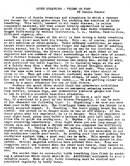Ken Kurtis
Contributor
Research by Edmonds and others indicated that buddy breathing is a very hard skill to learn to do properly (despite what proponents argue).
I'm not quibbling with you John but with Edmonds. I'd love to see that "research" because it's absolutely 180º from what my experience is in teaching buddy breathing to basic OW students for 30+ years.
the skill is so "hard" that we do it in the first pool session right after the equally "hard" skills of mask clearance and regulator retrieval. I find that I can get 90% of the students successfully buddy-breathing for extended periods of time very quickly (2-3 minutes of BB, until I tell them to stop and switch who's OOA). The other 10% take a little coaching but within a little while, they get the mechanics down too.
In fact, they generally all get so comfortable with it that at the end of the first class, when I send them into the deep end to "play", I tell them they can practice any of the skills we've done EXCEPT for buddy breathing. (I don't want their enthusiasm to get carried away in the deep end before i confirm they're good at the skill.) But I also tell them that I will come up to them as the OOA diver and they will buddy-breathe with me. (Gives me a good up-close look at hwo they're doing it and, if there's a problem, they've got got their own air supply.)
I generally find that I'm able to go diver-to-diver-to-diver, with me OOA the whole time, with no major problems. There are classes where I've spent 10-15 minutes without my own reg and simply subsisted on the buddy-breathing techniques of my brand new not-cetrtified only-had-one-pool-session divers.
It's NOT a hard skill to teach. Now if you, as the instructor, start with the mindset that's it's hard, I'm willing to bet your "failure" rate is higher. (Like with teaching that other "hard" concept, dive tables and deco theory.) And I'm leaning towards the thought that that's the bias of the Edmonds research.
That research also says the skill is lost quickly if not practiced regularly.
That I would agree with. I'm not sure about "quickly" but it's definitely a skill that needs to be practiced. Ideally, even if you have an octo, practice it at the start of every diving day and with every new buddy on that particular day.
A number of years ago I had a husband/wife team and we were "done" with the certificiation dives. They were doing the final dive of the day at Catalina, on their own, while I stayed on the boat and supervised. The husband was very prone to seasickness. Maybe 30 minutes into the dive, I saw them pop up together and it appeared they were sharing air. They both gave me an OK sign and started kicking back towards the boat.
When they got back on the boat, I asked them what happened. "Oh, I got sick," said the husband, "and threw up into my regulator. I remembered what you'd told us about holding the reg in your mouth and vomiting through the reg and I did that. But then when I tried to take a breath, the reg was clogged. So I turned to her, gave the out of air signal, and we just started buddy breathing and then ascended. No big deal. I was able to clear my reg out on the surface but we decided to come back to the boat anyhow."
Not hard. Needs to be practiced. Viable skill.
- Ken




